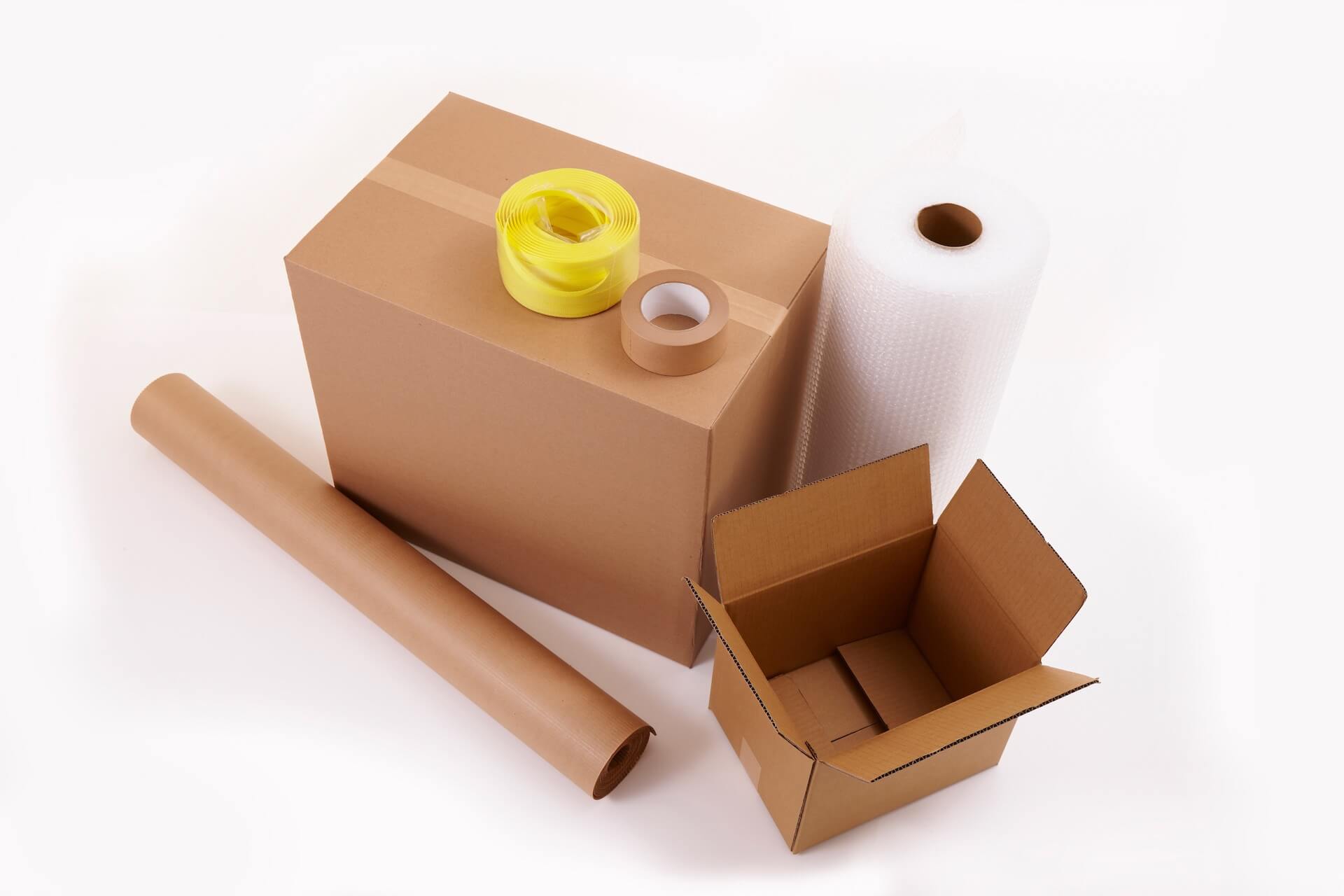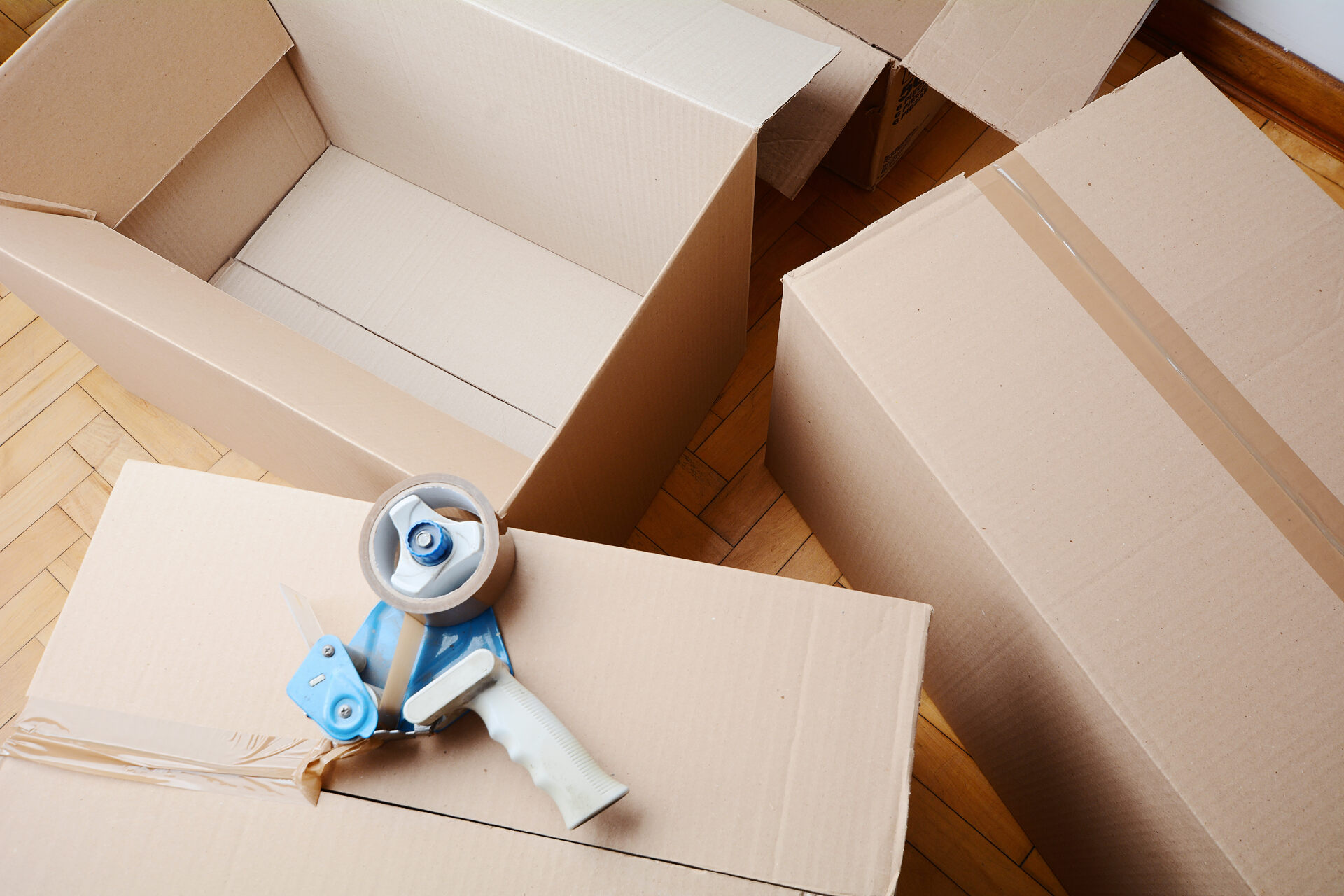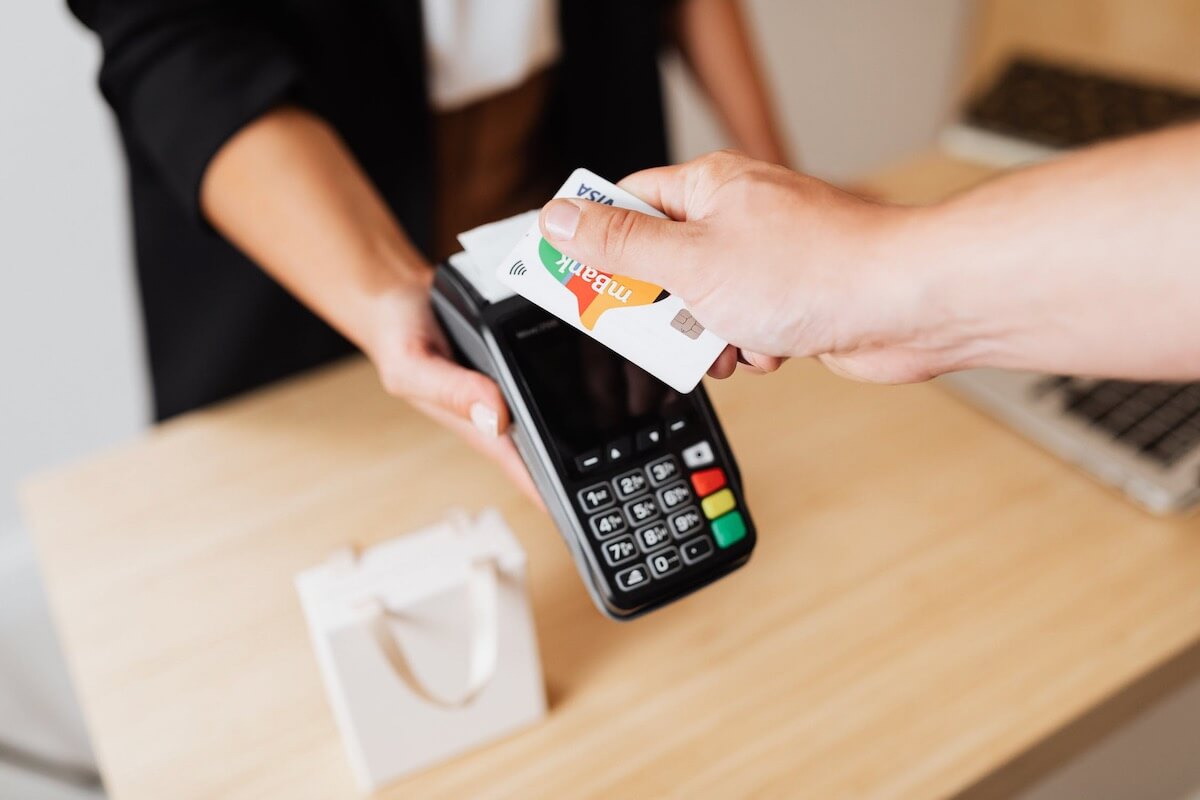

Have you started boxing up all your belongings? Wait a second! Do you have appropriate packing materials for moving? Choosing the right materials can help ensure that your items are protected during the move and arrive at the new destination in good condition. From boxes to bubble wrap, they play a critical role in the relocation process. Understanding the different types of materials available can help you make informed decisions about how to pack and protect your belongings.
The Importance of Using the Right Packing Materials for Relocation
Choosing proper materials for your relocation is crucial for avoiding a common relocation mistake: damaged or lost belongings. By packaging efficiently and using appropriate materials, you can reduce moving anxiety and ensure that your items arrive at your new home or office in the same condition as when they left.
Using the right materials, such as sturdy boxes, bubble wrap, tape, and paper, can help protect fragile items, prevent shifting during transport, and make it easier to unpack and organize your belongings.
By investing in quality materials and taking the time to pack your items properly, you can minimize the frustration often associated with relocating and enjoy a smooth transition to your new space.
Types of Packing Materials for Moving
There are a variety of materials available to help ensure the safe and efficient transport of your belongings during a move. Some of the most common types of materials include:
- Boxes: Sturdy cardboard boxes are essential for transporting items of all sizes, from books and kitchenware to clothing and electronics. They come in different sizes and strengths, so it’s important to choose the right type of box and supplies for the items you need to pack.
- Bubble wrap: This material is a popular choice for protecting fragile items such as glassware, china, and electronics. Bubble wrap comes in various sizes and thicknesses, and its air-filled bubbles provide a cushion that helps absorb shocks during transport.
- Packaging paper: This material is ideal for wrapping items to prevent scratches, dents, or other damage during the move. It can also be used to fill empty spaces in boxes to prevent items from shifting during transport.
- Packing peanuts: These lightweight foam peanuts are often used to fill empty spaces in boxes and prevent items from relocating around during transport. They can also provide cushioning and protect fragile items.
- Tape: This is a strong and durable tape that is used to secure boxes and reinforce their edges. It comes in various widths and strengths, and it’s essential for keeping your belongings safe and secure during the move.
The Pros and Cons of Each Type
Now, what type of materials would you benefit the most from? Check out the table with the pros and cons of each material so you know what would suit you the best for all belongings.
| Packing Material For Moving | Pros | Cons |
|---|---|---|
| Cardboard boxes | They are inexpensive and widely available. Another great advantage is that they are sturdy and can be stacked on top of each other. | The cardboard material is not waterproof and can easily tear or break if packed with too many things. |
| Packing peanuts | They are lightweight and can fill empty spaces in boxes to prevent items from shifting during transportation. | Peanuts can be messy and difficult to clean up. |
| Bubble wrap | It provides excellent protection against shock and vibration during transportation, and it is lightweight. | It is not environmentally friendly as it is made of plastic, and it can be expensive, especially for large quantities. |
| Packing paper | It is an affordable material. It is environmentally friendly and can be recycled after use. | It may not provide enough cushioning to protect fragile items. It can be difficult to use for items with irregular shapes. |
| Tape | It is very effective at preventing items from shifting during transportation. | It can be difficult to remove from certain materials. |
Packing and Moving Supplies Checklist
For an international move, it’s important to have sturdy and durable boxes of different sizes designed for international shipping. Bubble wrap and paper are necessary to protect fragile items, while tape secures boxes during transportation.
Labeling stickers and markers help identify the contents of each box, and furniture covers or shrink wrap protect larger items from damage. These supplies are essential for ensuring the safe and secure transportation of your belongings across long distances and international borders. Properly boxing up and labeling your items also makes the move much easier and more efficient.

Essential Boxes and Supplies
Here are more details about what kind of supplies and materials need to be taken into consideration:
- You will need sturdy, durable boxes in various sizes to pack your belongings.
- You require strong tape to seal your crates securely.
- Use bubble wrap to protect fragile items such as glassware, dishes, and electronics.
- Buy paper to wrap items that are not as fragile as those that need bubble wrap. This will help protect items from scratches and damage.
- Packing peanuts are needed to fill empty spaces in crates.
- Don’t forget furniture pads to protect large pieces of furniture from scratches and damage during transport.
- Mattress bags can protect mattresses from dust and dirt during transport.
- Wardrobe boxes are needed to package clothes, as they have a metal bar for hanging garments.
- Use plastic bins to pack items that need to be dry or for long-term storage.
- Buy markers and labels to label everything and keep track of what’s inside.
Overview of Different Types of Boxes
There are several different types available, each designed for specific items or purposes. Standard relocation boxes are the most common and come in various sizes, making them ideal for boxing up a range of household items.
Wardrobe boxes are tall and designed to hold hanging clothes, while dish crates offer extra protection for fragile items like glassware and dishes. The ones for pictures have adjustable sizes and are designed to protect framed pictures and artwork.
Mattress boxes are flat and protect mattresses and box springs from dirt and moisture, while TV ones provide extra padding and protection for flat-screen electronics. Finally, file cartons are smaller and designed to store important documents and files, with a lid that can be locked for added security.

Packing Supplies for Fragile Items
If you’re relocating for the first time, boxing up fragile items can be intimidating. However, with the right supplies, you can prevent things from breaking during transit. One essential item is bubble wrap, which can be wrapped around delicate items such as dishes, glasses, and other breakables to provide extra cushioning.
Packing peanuts and foam inserts are also useful for filling empty spaces in cartons and adding an extra layer of protection. When packaging dishes, it’s best to place them vertically in the box, with a layer of padding between each item. Labeling boxes as “fragile” is important to alert movers to handle these boxes with extra care.

How to Pack Fragile Items Safely
First, use sturdy containers that are the appropriate size for the item being packed. Next, wrap each item individually with bubble wrap or paper to provide extra cushioning. When boxing-up multiple items in a box, use peanuts or foam inserts to fill empty spaces.
Label the box and mark which end is up to ensure movers handle it with care. When packaging dishes, place them in the box with padding between each item. For extra protection, you can also use dish boxes with built-in dividers. Finally, always lift and carry fragile boxes carefully.

Environmentally Friendly Packaging Materials
Fortunately, there are environmentally friendly materials available that can reduce your carbon footprint. One option is to use recycled cardboard containers, which can be reused or recycled after the move. Making eco-friendly choices not only benefits the environment but can also give you peace of mind knowing you’ve made a positive impact in the city you picked to live in.
Overview of Biodegradable and Reusable Packing Materials
Biodegradable materials, such as peanuts made from cornstarch or paper-based materials, break down naturally over time, reducing waste and harm to the environment.
Reusable materials, such as plastic storage bins or suitcases, can be used multiple times, reducing the need for new materials and ultimately reducing waste. Using these materials can also be more cost-effective in the long run, as they can be used for future moves or for storage purposes.
Apart from using biodegradable materials, it is possible to organize a zero-waste move. Find out how to do this by watching the video below.
International Moving: Additional Considerations
It’s important to research the rules and regulations regarding the importation of certain items and materials to the destination country. Some countries have restrictions on the use of certain materials, such as plastic bags or certain types of peanuts.
Consider the length and conditions of the journey, as items may need to withstand a longer period in transit and different weather conditions. Choosing sturdy, high-quality materials and investing in additional protective measures, such as climate-controlled shipping containers, can help ensure that items arrive safely at their destination.
Additional Supplies Needed for Moving Internationally
Bear in mind that investing in high-quality luggage sets or durable storage containers can be useful for transporting personal items or clothing. Depending on the mode of transportation, items such as tie-down straps, bungee cords, or moving blankets may also be necessary. If you need to move your piano, a dolly will be required. By having these additional packaging supplies for moving on hand, movers can help ensure that their belongings arrive safely at their destination.

Customs Regulations and Restrictions
Learn about customs regulations and restrictions because different countries may have varying rules and regulations regarding the importation of certain materials.
Some countries may prohibit the use of certain types of materials, such as plastic bags or foam peanuts, due to environmental concerns or safety hazards. Additionally, some countries may require additional documentation or inspections for certain types of materials or items.
By understanding these regulations and restrictions, movers can ensure that their materials meet the requirements and avoid any potential delays or fines during the customs clearance process.

Where to Buy Packing Materials
Walmart is known for its low prices. While they may not have many alternatives in brick-and-mortar stores, their internet site includes a plethora of low-cost products. If you have a Walmart+ membership, you can easily shop for supplies and materials.
Another option is Home Depot which offers free in-store pickup to help you save money on shipping. Great materials and supplies are often found on the Amazon site. Prices are frequently competitive since they employ a variety of retailers. If you don’t want to spend a lot of money on supplies, a good idea is to find them on the Craigslist website.

How to Save Money on Packing Materials
There are ways to reduce waste and save money on materials and supplies. For instance, one can ask for free boxes from local stores, supermarkets, or online marketplaces such as Facebook Marketplace or Craigslist. These boxes might not be brand new, but they will serve the purpose of moving your belongings.
An alternative is to use household items such as clothing, towels, and blankets to wrap fragile items instead of buying bubble wrap. You can use plastic storage bins or suitcases to pack your belongings as well.
To Save Money Even Further, Contact an International Moving Company For Help
While these relocation tips can help you save money on materials, it’s also important to remember that moving can be a complex and time-consuming process. To ensure a smooth and stress-free relocation, it may be helpful to contact an international moving company. Not only can they provide you with professional materials and guidance, but they can also handle all aspects of your relocation and provide you with packing services, storage services, and international moving services.
By entrusting your move to a reputable relocation company like Shepherd International Movers, you can save both time and money while ensuring that your belongings arrive safely at your new destination.
FAQ
What Types of Packing Materials Are Allowed for International Moves?
If you’re moving overseas, boxing up your belongings properly is crucial to ensure that they arrive safely at your new destination. When it comes to materials, note that some items may be restricted or prohibited by customs regulations.
Generally, materials such as bubble wrap, paper, foam inserts, and sturdy cardboard boxes are allowed for international moves. However, it’s always a good idea to research the customs regulations of your destination country to ensure that you’re not boxing up anything that is prohibited.
Are There Any Specific Packaging Materials Required for Shipping Items Internationally?
If you are planning to move to a new city in a different country, it’s important to make sure that your belongings are packed properly for international shipping. For example, you should use sturdy cardboard boxes or plastic bins, bubble wrap or paper to protect fragile items, and tape to secure the boxes. Additionally, create an inventory of your belongings which will help you stay organized during the relocation. By adding these tasks to your moving to-do list, you can ensure that your items are properly prepared for international shipping.
How Can I Ensure That My Items Will Be Protected During an International Move?
Use high-quality materials, such as sturdy boxes, bubble wrap, and tape, to pack your belongings carefully. If you are boxing up a TV or furniture, you may want to consider using a professional packing service or specialty containers to ensure that they are properly protected. This will help you relocate efficiently.
Are There Any Restrictions on the Types of Packing Materials I Can Use When Moving Abroad?
Different countries have different customs regulations, and some materials may be prohibited or restricted. For example, some countries may prohibit the use of wood materials due to concerns about pests or disease, while others may prohibit the use of certain types of materials, such as plastic bags or foam peanuts.
Can I Reuse Packaging Materials for an International Move?
Yes, you can reuse materials for an international relocation as long as they are in good condition and meet the customs regulations of your destination country.
How Can I Pack Fragile Items for an International Move?
To pack fragile items for an international relocation, you should use high-quality materials, such as bubble wrap, paper, and sturdy boxes. Wrap each item individually and cushion it with paper, and make sure that the box is labeled as fragile.
What Types of Packing Materials Are Necessary for Shipping Electronics Internationally?
To ship electronics internationally, you should use sturdy boxes or crates, bubble wrap or foam inserts to protect the items, and tape to secure the box or crate.
Are There Any Customs Regulations That Impact the Types of Packing Materials I Can Use for an International Move?
Yes, there may be customs regulations that impact the types of materials you can use for an international relocation. For example, some countries prohibit the use of wood materials, while others prohibit the use of plastic bags or foam peanuts.
How Can I Determine How Much Packaging Materials I Will Need for an International Move?
To determine how much packaging materials you will need for an international relocation, you should create an inventory of your belongings and estimate how many boxes or crates you will need. You can also consult with your moving company for guidance.
What Are Some Cost-Effective Packaging Materials Options for an International Move?
Some cost-effective options include using newspaper or other recycled materials for cushioning, using plastic bins instead of cardboard boxes, and purchasing materials in bulk.










